
Shrubs Around Las Vegas, Vegetation Around Las Vegas
 Black Sagebrush can cover vast acreages in the Great Basin |
General: Black Sagebrush (Artemisia nova) is a low-growing, upright, brushy shrub with upright stems and gray-green leaves. Basal leaves are divided into three lobes at the tip, while upper leaves often are entire. Plant crown is uneven (not flat topped). Leaves with numerous dark glands on the surface, sticky to touch when mashed between fingers. Flowerheads composed of disk flowers only (no "petals" on this sunflower). Old flower stalks brown, persistent on the plant. Flowerheads are small and borne along the upper stem. Also on the flowering stems are ephemeral leaves, and these leaves are entire (no lobes). Black Sagebrush is one of the dominant shrub species in the Great Basin Desert, and it extends into the Mojave Desert at higher elevations and is a fairly common component of basin and mountain communities in drier areas in the Upper Sonoran (Pinyon-Juniper Woodland), Transition (Yellow Pine), and Canadian (Pine-Fir Forest) life zones. |
 Black Sagebrush: low-growing, shaggy shrub |
Family: Sunflower (Asteraceae). Other Names: Artemisia arbuscula var. nova, Artemisia tridentata ssp. nova. Plant Form: Upright, brushy shrub. Height: Usually to about 4 feet, often higher. Stems: Upright. Leaves: Usually 1/2 to 2 inches, wedge-shaped with 3 lobes at the tip, densely hairy, which gives them a gray-green appearance. Leaves often in axillary clusters. Keeps leaves during winter. |
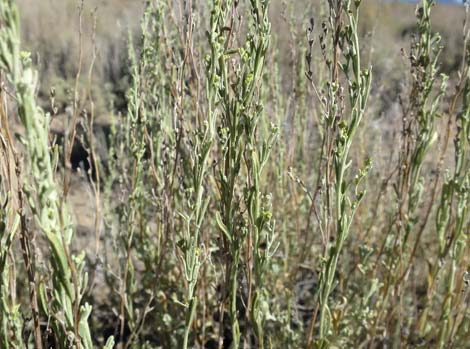 Flowing stems held above the plant |
Flowers: Blooms during summer. Inflorescence: flowerheads along about 5-7 inches of stem, held close to stem. Flowerheads very small; individual flowers tiny. Disk flowers only, 3-5 per flowerhead. Seeds: Habitat: Black sagebrush is closely associated with dry, salt-desert vegetation, but grows at slightly higher sites with less salty soils. It is most common on shallow, dry, infertile soils at low to mid-elevations. Elevation: About 4,600 to 11,000 feet. Distribution: Black sagebrush occurs from central Idaho, west-central Montana, and southwestern Wyoming south to southeastern California, northern Arizona, and northern New Mexico. Comments: People tell me to identify this species of sagebrush by looking for dark spots on the leaves, but honestly, I've rarely seen them. |
 |
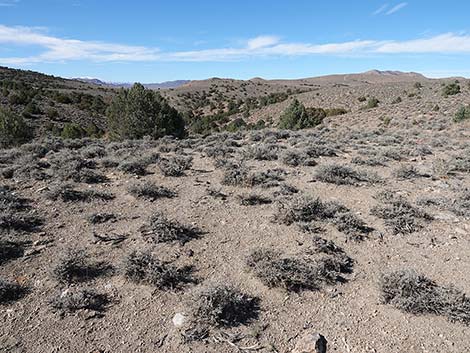 |
 |
 |
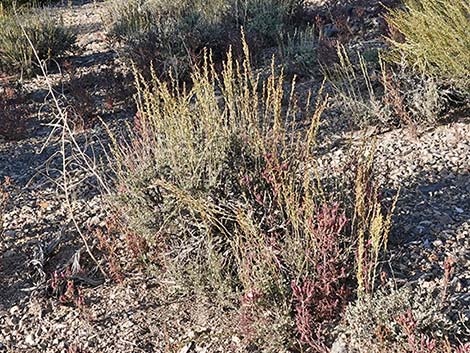 |
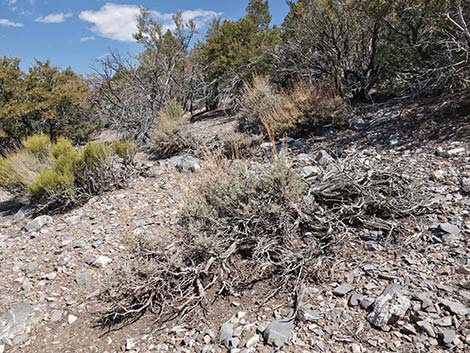 |
 |
 |
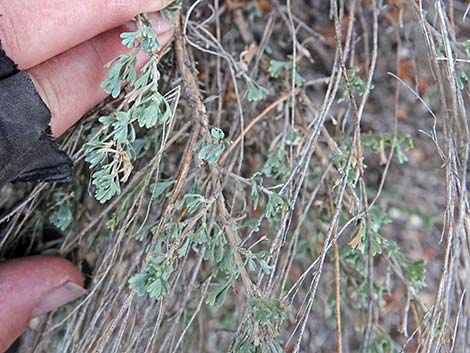 Persistent, basal leaves |
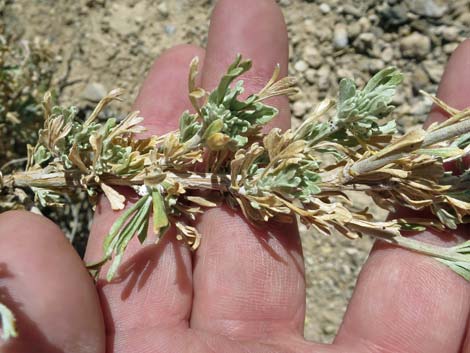 Persistent, basal leaves |
 Diversity in shape and form of basal leaves |
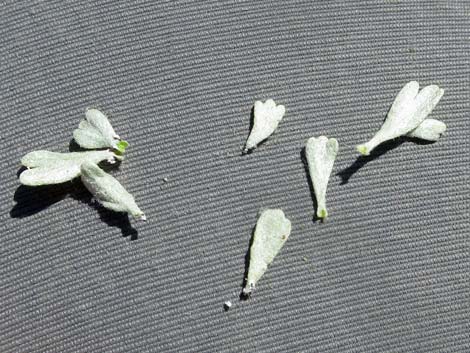 Diversity in shape and form of basal leaves |
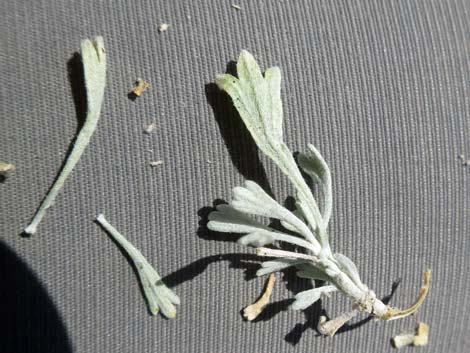 Diversity in shape and form of basal leaves |
 Persistent, basal leaves with dark spots (glands) |
 Ephemeral, flowing stalk leaves |
 Ephemeral, flowing stalk leaves entire (not lobed) |
 Flower stalk |
 Individual flowerhead at the end of a flower stalk |
 Two flowerheads, one in bud and one with open flowers |
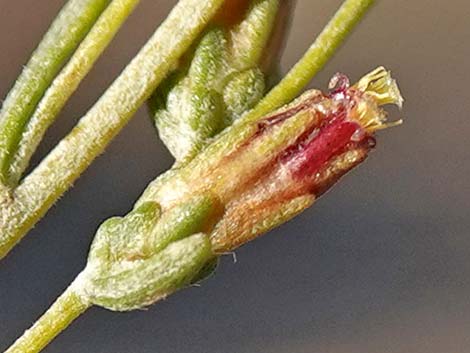 Flowerheads with open flowers |
Note: All distances, elevations, and other facts are approximate. Names generally follow the USDA database.
![]() ; Last updated 240913
; Last updated 240913
| All Shrubs | Plant Species Index | Glossary | Copyright, Conditions, Disclaimer | Home |